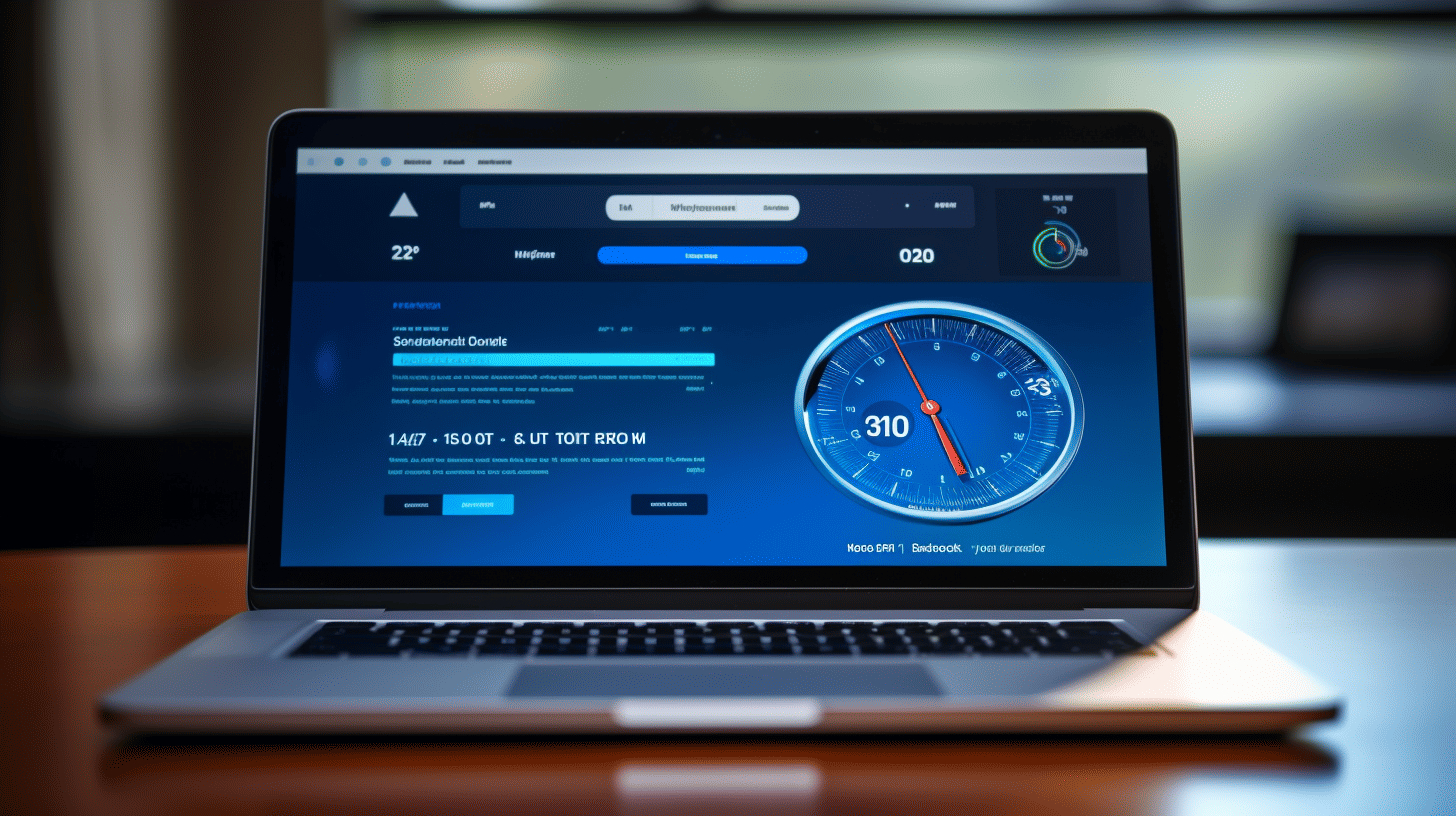In today’s fast-paced digital world, website speed plays a crucial role in attracting and retaining online users. A slow-loading website can lead to frustration, decreased user engagement, and even lost customers. As a freelance web developer, it’s essential to understand the importance of website speed and master the techniques that can optimize it. By unlocking the power of speed, you can deliver exceptional user experiences and set yourself apart from the competition.
In this article, we will explore the significance of website speed and its impact on conversions and search engine ranking. We will also delve into the growing field of web development and the opportunities it presents for freelancers. Finally, we will share three essential techniques that can help you optimize web speed and create lightning-fast websites for your clients.
So, buckle up and get ready to dive into the world of web development and uncover the secrets to unlocking the power of speed! 🚀
The Importance of Website Speed
In today’s fast-paced digital world, website speed has become a crucial factor in determining the success of an online business. Users have increasingly high expectations when it comes to browsing the web, and if your website takes too long to load, they won’t hesitate to hit that dreaded back button.
Average Page Speed
Did you know that the average page speed of a website is 3.21 seconds? That might not sound like a lot, but in this age of instant gratification, it can make a significant difference. Users want instant access to information, products, and services, and if your website fails to deliver, they will most likely move on to a competitor that does.
Impact on Conversions
A 1-second delay in page load time can result in a 7% reduction in conversions. Let that sink in for a moment. For an e-commerce website, that means potentially losing out on a substantial number of sales. Users are less likely to make a purchase if they have to wait for the page to load, and the longer they wait, the higher the chances of them abandoning their cart altogether.
Bounce Rates and Search Engine Ranking
Optimizing your website speed not only improves customer satisfaction but also has a direct impact on important metrics like bounce rates and search engine rankings. When users encounter a slow-loading website, they are more likely to leave immediately without exploring further. This leads to higher bounce rates, which can negatively affect your search engine ranking.
Search engines like Google take website speed into consideration when ranking search results. They prioritize websites that provide a better user experience, which includes fast page load times. By investing in website speed optimization, you can improve your chances of ranking higher in search results, driving more organic traffic to your site.
Boosting Conversions and Customer Satisfaction
A website that loads quickly not only benefits your search engine ranking but also enhances customer satisfaction. Users are happier when they can quickly find the information or products they’re looking for, resulting in higher engagement and conversion rates.
So how can you accelerate your website loading speed? There are various strategies and best practices you can implement, such as optimizing images, minifying CSS and JavaScript files, and leveraging browser caching. For more detailed guidance on turbocharging your WordPress site and accelerating your website loading speed, check out this resource.
Remember, in the digital landscape, every second counts. Don’t let slow page load times hold your website back from reaching its full potential. Invest in website speed optimization and provide your users with a seamless browsing experience that keeps them coming back for more.
Growth in the Field of Web Development
Web development is a rapidly growing field, showing no signs of slowing down in the years to come. With the increasing demand for websites and online applications, web developers are in high demand across various industries. In this section, we will explore the projected growth rates, the rise of freelancing opportunities, and the income ranges in the field of web development.
Projected Growth rates
According to the Bureau of Labor Statistics, the employment of web developers and digital designers is projected to grow by an impressive 23% from 2021 to 2031[1]. This growth rate is significantly faster than the average for all occupations, indicating a strong demand for skilled web developers.
The rise of e-commerce, the proliferation of mobile devices, and the continuous evolution of technology have contributed to this high growth rate. As more businesses invest in their online presence, the need for talented web developers who can create visually appealing and functional websites increases.
Freelancing in Web Development
One fascinating trend within the field of web development is the rise of freelancing opportunities. Gone are the days when web developers were limited to traditional 9-to-5 jobs. Today, approximately 25% of all web developers are freelancers, and this number is expected to grow[1].
Freelancing offers web developers the flexibility to choose their projects, work remotely, and have control over their schedules. It allows them to take on a diverse range of clients, work on exciting projects, and potentially earn a higher income.
In addition to flexibility, freelancers can also benefit from the use of managed WordPress platforms, such as Managed WP. These platforms provide tools and features specifically designed for freelance web developers to streamline their workflow, enhance productivity, and deliver high-quality websites to their clients[2].
Income Range in Web Development
Web development offers a promising income potential for professionals in the field. The salary range for web developers varies based on factors such as experience, location, and specialization. On average, web developers make a salary range from $26.63 to $51.74 per hour[1].
While freelancers have the opportunity to set their own rates and potentially earn more, those working in full-time positions can still enjoy competitive salaries and benefits. As web development continues to be an essential aspect of modern business, the demand for skilled professionals will continue to drive competitive compensation packages.
In conclusion, the field of web development is experiencing significant growth and offers a plethora of opportunities for professionals. Whether you choose to work in a corporate environment or pursue a freelance career, the prospects are promising. As new technologies emerge and online presence becomes increasingly crucial, web developers will continue to play a vital role in shaping the digital landscape.
🌟 Benefits of Managed WordPress 🌟
Essential Techniques for Optimal Web Speed
In today’s fast-paced digital world, website speed is more important than ever. Users expect instant access to information and are quick to abandon websites that take too long to load. In fact, studies have shown that even a one-second delay in page load time can lead to a significant decrease in conversions and user satisfaction.
To ensure your website performs at its best, it’s crucial to implement techniques that optimize its speed. In this article, we will explore three essential techniques that can help you achieve optimal web speed. These techniques are backed by industry best practices and have been proven to deliver significant improvements in website performance.
Technique 1: Efficient Caching Strategies
Caching is a process that stores static copies of your website’s pages, images, and other assets on the user’s device or in a cache server. This allows subsequent page loads to be faster since the browser doesn’t need to request all the data again from the server. Here are some efficient caching strategies to consider:
- Browser Caching: Implementing browser caching headers properly allows returning visitors to load your website from their local cache, reducing server load and improving load times.
- Content Delivery Network (CDN): A CDN stores copies of your website’s assets in multiple servers worldwide, reducing the distance between the user and the server and improving load times.
- Object Caching: Implementing an object cache, such as Redis or Memcached, can significantly improve database performance by caching query results and reducing the load on your database server.
By implementing these caching strategies, you can reduce server load, improve load times, and provide a faster browsing experience for your users.
Technique 2: Minification and Compression
Minification and compression are techniques that optimize the size of your website’s code and assets, reducing the amount of data that needs to be transferred between the server and the user’s browser. Here’s how you can implement these techniques:
- Minification: Minify your HTML, CSS, and JavaScript files by removing unnecessary characters, whitespace, and comments. This reduces file sizes and improves load times.
- Compression: Enable gzip compression on your server to compress your website’s files before sending them to the user’s browser. This reduces the amount of data transferred and improves load times.
By implementing minification and compression techniques, you can significantly reduce your website’s file sizes and improve load times, leading to a faster and more efficient browsing experience.
Technique 3: Optimized Image and Media Handling
Images and media files can significantly impact your website’s performance. Large file sizes and improper handling can lead to slower load times and increased bandwidth usage. Here are some best practices for optimizing images and media:
- Image Compression: Compress your images without sacrificing quality using tools like ImageOptim or Photoshop’s Save for Web feature. This reduces file sizes and improves load times.
- Lazy Loading: Implement lazy loading for images and media files, loading them only when they come into view. This improves initial load times and reduces bandwidth usage.
- Responsive Images: Use responsive images that adapt to different screen sizes, delivering the appropriate version of the image for each device. This reduces unnecessary data transfer and improves load times.
By optimizing your website’s images and media files, you can greatly improve load times and provide a better user experience, especially on mobile devices.
In conclusion, by implementing these three essential techniques – efficient caching strategies, minification and compression, and optimized image and media handling – you can drastically improve your website’s speed and provide a seamless browsing experience for your users. Implementing these best practices will not only lead to better user satisfaction but also positively impact your website’s SEO performance.
For more insights on how to improve website speed, check out this Practical Solution for Website Speed on our blog.
Conclusion
In conclusion, website speed is a critical factor in the success of any online business or freelance web developer. It directly impacts user experience, conversions, and search engine rankings. The growth in the field of web development has opened up numerous opportunities for freelancers, with a wide range of income potential. To ensure optimal web speed, implementing essential techniques such as optimizing images, using caching methods, and minimizing code is crucial. By prioritizing website speed, freelancers can deliver exceptional digital experiences to their clients and stay ahead in the competitive industry.
Managed-WP is a premium managed WordPress cloud hosting platform that can help freelance web developers optimize website speed effortlessly, simplifying infrastructure and offering expert 24/7/365 problem-solving. With Managed-WP, freelancers can focus on their core web development tasks while ensuring lightning-fast, secure, and reliable websites for their clients. Experience the power of speed with Managed-WP today!
Frequently Asked Questions
- Why is website speed important for freelance web developers?
Website speed is crucial for freelance web developers because it directly impacts user experience and search engine rankings. A slow website can lead to high bounce rates, lower conversion rates, and poor organic visibility.
- What are some essential techniques to improve website speed?
Some essential techniques to improve website speed include optimizing image sizes, minifying CSS and JavaScript files, using caching plugins, enabling browser caching, utilizing a content delivery network (CDN), and choosing a reliable hosting provider.
- How can optimizing image sizes contribute to website speed?
Optimizing image sizes helps reduce page load time by reducing the file size of images without compromising quality. This can be done through compression techniques, choosing the appropriate image format, and lazy loading images.
- What is browser caching and how does it improve website speed?
Browser caching allows for storing static website resources, like images, CSS, and JavaScript files, locally on the user’s device. This eliminates the need to fetch these files with each page visit, resulting in faster load times for returning visitors.
- How does a content delivery network (CDN) enhance website speed?
A content delivery network (CDN) helps improve website speed by serving website content from servers located geographically closer to the user. This reduces latency and decreases the time it takes for data to travel between the server and the user’s device.



















